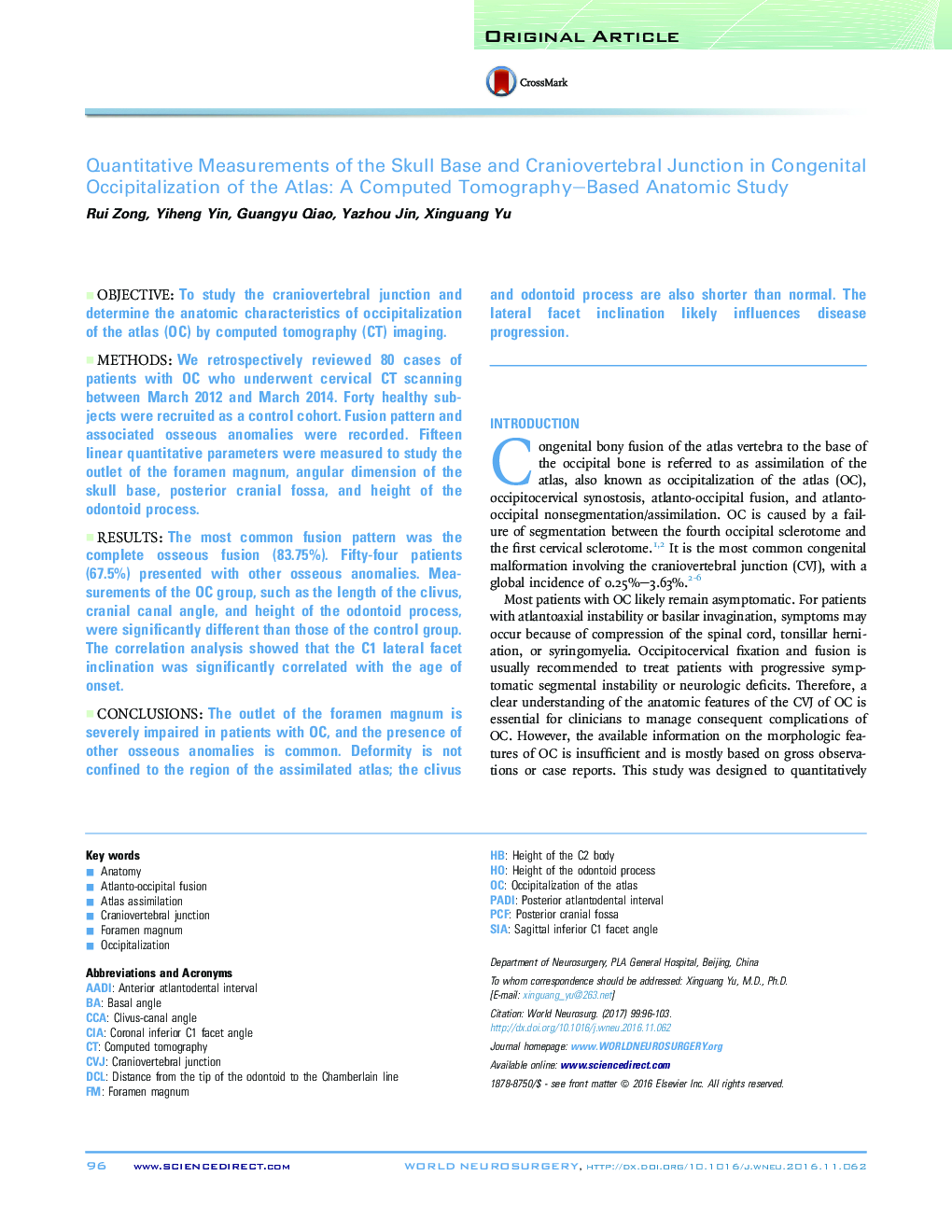| Article ID | Journal | Published Year | Pages | File Type |
|---|---|---|---|---|
| 5634808 | World Neurosurgery | 2017 | 8 Pages |
ObjectiveTo study the craniovertebral junction and determine the anatomic characteristics of occipitalization of the atlas (OC) by computed tomography (CT) imaging.MethodsWe retrospectively reviewed 80 cases of patients with OC who underwent cervical CT scanning between March 2012 and March 2014. Forty healthy subjects were recruited as a control cohort. Fusion pattern and associated osseous anomalies were recorded. Fifteen linear quantitative parameters were measured to study the outlet of the foramen magnum, angular dimension of the skull base, posterior cranial fossa, and height of the odontoid process.ResultsThe most common fusion pattern was the complete osseous fusion (83.75%). Fifty-four patients (67.5%) presented with other osseous anomalies. Measurements of the OC group, such as the length of the clivus, cranial canal angle, and height of the odontoid process, were significantly different than those of the control group. The correlation analysis showed that the C1 lateral facet inclination was significantly correlated with the age of onset.ConclusionsThe outlet of the foramen magnum is severely impaired in patients with OC, and the presence of other osseous anomalies is common. Deformity is not confined to the region of the assimilated atlas; the clivus and odontoid process are also shorter than normal. The lateral facet inclination likely influences disease progression.
